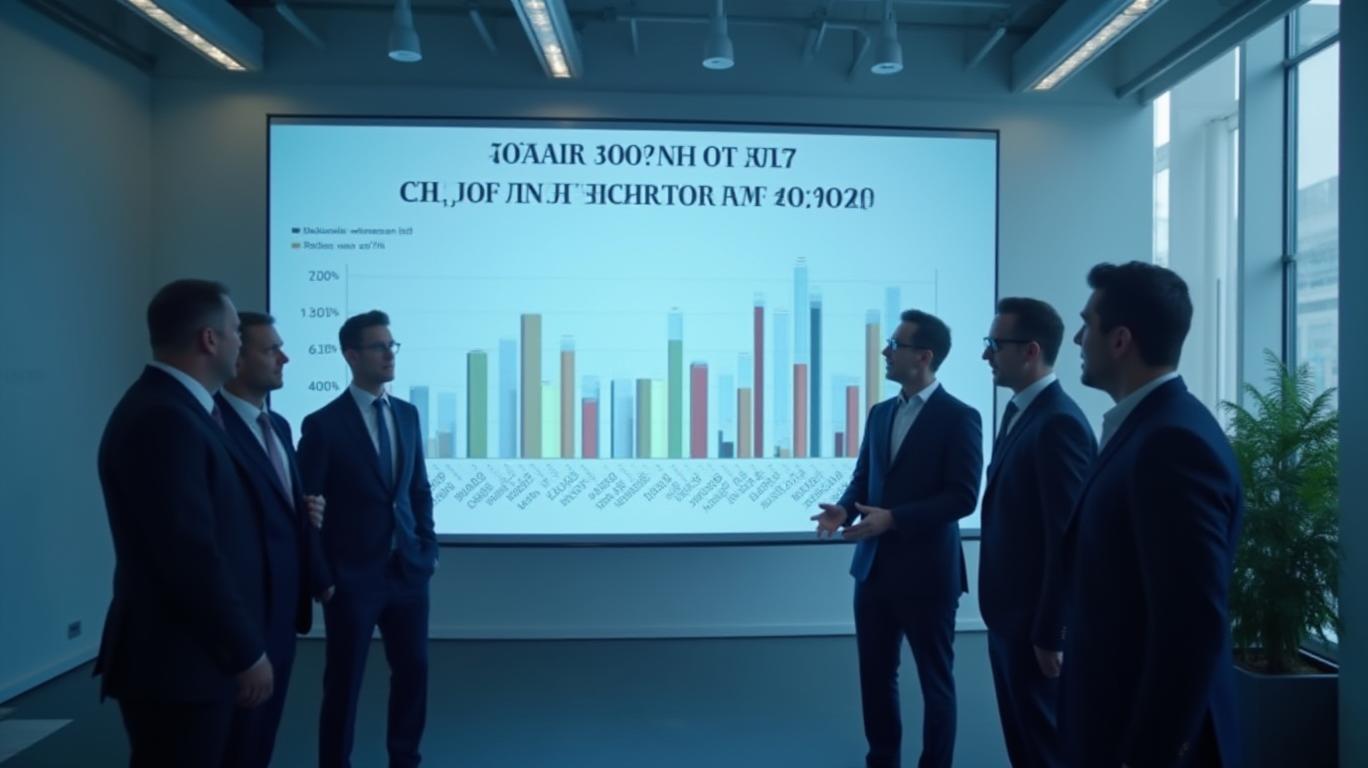Blackbaud’s Q1 2025 Earnings Signal Steady Progress Toward Rule of 45 Ambition
Blackbaud Inc. (NASDAQ: BLKB) delivered a cautiously optimistic performance in Q1 2025, balancing organic revenue growth with disciplined cost management. The results underscore the software giant’s strategic focus on achieving its long-term financial goals, including its ambitious Rule of 45 target by 2030. Here’s what investors should know about the quarter’s implications for the company’s trajectory.
Financial Highlights: Rule of 40 Crossed, Rule of 45 in Sight
Blackbaud’s Q1 revenue rose 5.8% organically to $271 million, with non-GAAP diluted EPS reaching $0.96. A standout achievement was the Rule of 40 score—40.1%, marking its first full attainment of this metric, which combines revenue growth and profitability. This milestone is critical, as the company aims to hit a Rule of 45 by 2030, a goal that would cement its position as a leader in the social impact software sector.

The Rule of 40—revenue growth + EBITDA margin—is a key gauge of a SaaS company’s health. Blackbaud’s Q1 EBITDA margin of 34.3% combined with its revenue growth to cross the threshold, signaling a maturing business model. While the Rule of 45 remains a multiyear target, this result suggests management’s cost discipline and revenue strategies are on track.
Capital Allocation: Share Repurchases as a Priority
Blackbaud’s shareholder-friendly approach remained front and center. In 2024, the company repurchased 10% of its outstanding shares, with net share settlements pushing total buybacks to 11%. In Q1 2025 alone, it repurchased 4% of its shares, within its 3%-5% annual target. This focus on returning capital aligns with its commitment to financial flexibility, even as it invests in innovation.
Investors should note that share repurchases reduce dilution and boost EPS, but they also require steady cash flow. Blackbaud’s free cash flow of $88 million in Q1 (up 10% year-over-year) supports this strategy. However, the company must balance buybacks with growth investments, such as AI tools.
Operational Strengths: Contracts, Cloud, and AI
Behind the numbers lie structural improvements:
- Three-Year Contracts: blackbaud transitioned two-thirds of its revenue to three-year agreements from shorter one-year terms, enhancing predictability. This move reduces customer churn and stabilizes cash flows.
- Cloud Migration: The closure of most private data centers cut costs, with only two remaining. This shift aligns with industry trends toward scalable cloud infrastructure.
- AI Innovation: The YourCause Expedited Giving initiative—a pilot to cut corporate donation processing from weeks to days—could boost customer retention and satisfaction. Such projects position Blackbaud as a technology leader in its niche.
Leadership Transition: Strategy Overhauled
The departure of Tony Boor, a 14-year CFO, signals a strategic pivot. Boor now leads Corporate Development and Strategy, focusing on the Rule of 45 goal. His successor, Chad Anderson, brings 12 years of experience in financial systems and operational efficiency—key strengths for sustaining cost discipline. This transition suggests management is prioritizing execution over maintenance, a positive sign for long-term growth.
Outlook: Mid-Single-Digit Growth and the Rule of 45
Blackbaud reaffirmed its aim to maintain mid-single-digit organic revenue growth through recurring revenue streams and customer-centric solutions. The Rule of 45 target hinges on incremental margin expansion and sustained growth. While macroeconomic pressures could challenge this, Blackbaud’s focus on high-margin cloud services and niche dominance in education and nonprofit software provide resilience.
Conclusion: A Steady Hand on the Wheel
Blackbaud’s Q1 results highlight a company executing on its strategic pillars: profitable growth, capital returns, and operational excellence. The Rule of 40 milestone, paired with a 10% annual share repurchase pace and structural cost savings, suggests it is well-positioned to meet its 2030 goal.
However, investors should monitor execution risks, such as competition in the SaaS space and the success of AI-driven initiatives like YourCause. With a Rule of 40 now within reach, the next test is whether Blackbaud can sustain margins while scaling innovation—a balance that will determine if the Rule of 45 is more than a distant ambition.
In a sector where profitability and growth rarely align, Blackbaud’s progress so far offers a compelling case for cautious optimism. The question now is whether its disciplined approach can turn a quarter’s milestone into a multiyear success story.

_b905d9341749265671656.jpg)








